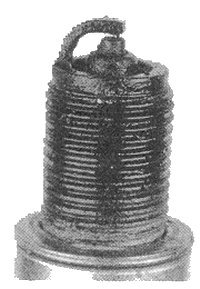Jetting Your Carburetor: Part Two
 Yesterday we introduced the purpose of jetting a carb and quickly overviewed the three main circuits. Depending on whether you have a four or two-stroke engine, the carburetor adjusts the ratio of fuel to air or of fuel and Evinrude XD100 oil and air, respectively. Today we will be examining the main jet more closely and seeing the impact that it has on your vehicle.
Yesterday we introduced the purpose of jetting a carb and quickly overviewed the three main circuits. Depending on whether you have a four or two-stroke engine, the carburetor adjusts the ratio of fuel to air or of fuel and Evinrude XD100 oil and air, respectively. Today we will be examining the main jet more closely and seeing the impact that it has on your vehicle.
When the throttle is more than three-quarters of the way open, the main jet comes into play. At this point, the needle is high enough that the main jet is now controlling the flow of fuel. The main jet is categorized by a number that indicates the size of its hole; the bigger the number, the larger the hole. A higher number will allow more fuel to get through the system, resulting in a richer fuel to oil ratio.















